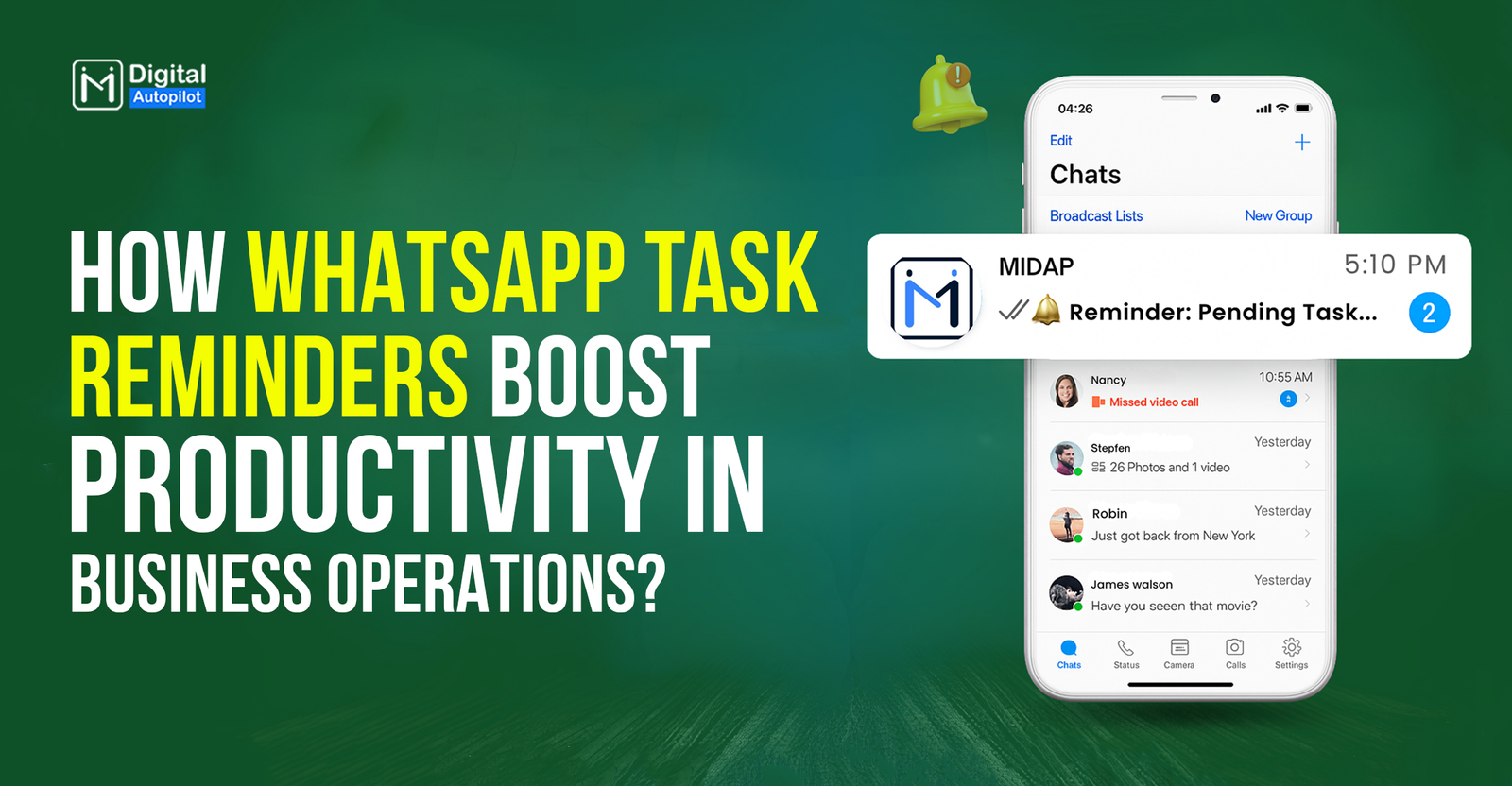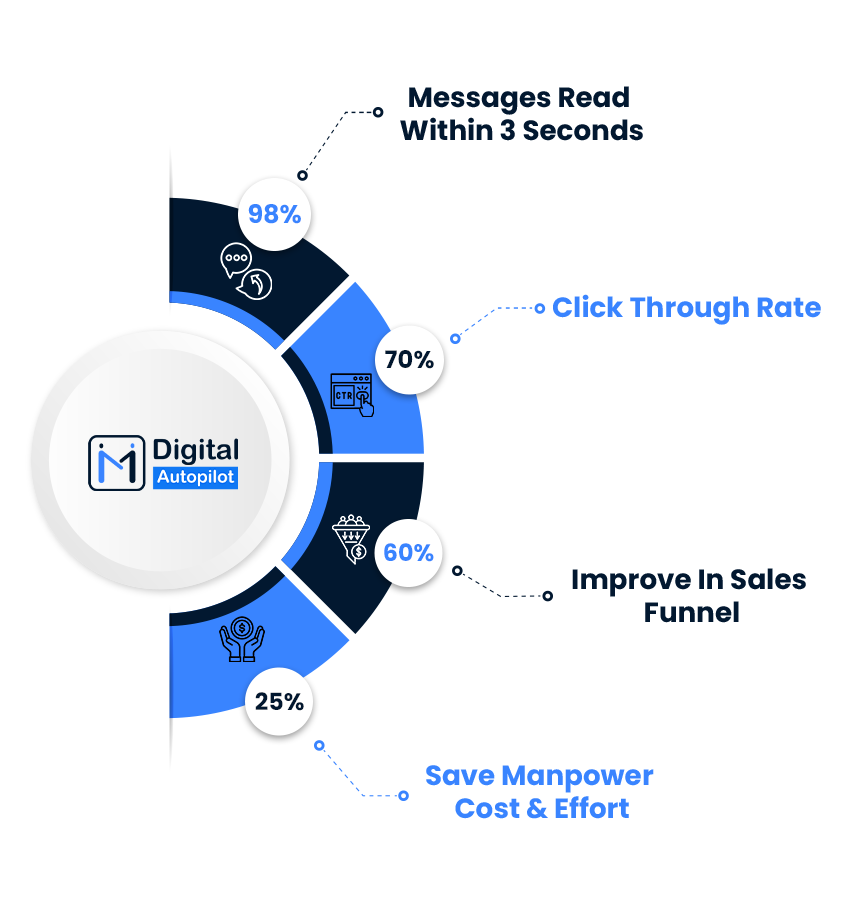Manual follow-ups are one of the biggest time-wasters in Indian businesses today.
According to a study, business owners and managers spend 30–40% of their time just following up on tasks and pending work.
It’s even worse in Indian SMEs, where most communication happens via WhatsApp, Verbally, calls, and informal reminders.
This is not only inefficient but also risky for business growth.
Let’s break it down.
Key Stats You Should Know
- Businesses lose up to 25% of productivity due to poor follow-up systems
- 85% of Indian SMEs still depend on manual follow-ups through calls and WhatsApp
- Automated reminders can increase task completion rates by 40–50%
- Real-time tracking systems reduce owner stress and task delays by 70 %+
How Manual Follow-ups Waste Your Time and Energy
If your daily routine looks like this:
- Repeating the same instructions to different people
- Calling 5–6 people to ask, “What’s the update?”
- Sending reminders on WhatsApp, hoping someone replies
- Forgetting tasks and deadlines because everything is in your head
- Forgetting your own important work due to mental overload
- Relying on team memory instead of system alerts
Then you are stuck in what we call: Follow-up Mode.
And this mode hurts your:
Time, Focus, Business speed, Peace of mind, Growth
5 Common Problems Caused by Manual Follow-ups
1. Missed Deadlines
When reminders depend on memory, things are forgotten. Important tasks get delayed or skipped.
2. Low Accountability & Blame-Game
No one knows who’s responsible for what. If something is not done, people pass the blame.
3. High Stress for the Owner
You keep checking, reminding, and chasing. This adds daily pressure and frustration.
4. No Real-Time Visibility
You don’t know what’s completed and what’s pending — unless you ask.
5. Poor Customer Experience
Clients don’t get timely updates. Delays in service lead to trust issues
Other Business Owners Found This Useful: MIS Dependency Is Hurting Your Business? — Do This Instead
The Hidden Cost of Manual Follow-ups
You may think follow-ups are “part of the job.” But here’s what they actually cost you:
Time — 2-3 hours daily = 60+ hours/month = 720+ hours/year (Almost 30 Days/1 month)
Delays — Work gets done late, affecting clients
Errors — Things get missed or done in a rush
Team dependency — You become the only reminder system
Lost growth — No time left for planning, sales, or scaling
The longer you run like this, the more stressful it becomes.
What You Should Do Instead of Manual Follow-ups
Modern businesses use automated follow-up systems that work without daily reminders from you.
One such system is MIDAP (MI Digital Autopilot) — designed for Indian business owners who want to run their operations on autopilot.
Here’s how MIDAP solves the follow-up problem:
1. Auto Reminders via WhatsApp
Once a task is assigned in MIDAP, the system sends reminders to the team — before the deadline. No more calls, messages, and stress!
2. Real-Time Task Tracking
Check the dashboard anytime and see:
- What’s done
- What’s pending
- Who is responsible
- When it’s due
Everything is visible without asking anyone.
3. Repeat Task Automation
Daily, weekly, or monthly tasks can be set once.
MIDAP automatically assigns and reminds your team regularly.
4. Smart Notifications for Delays
If someone delays a task, the system sends alerts. You know the moment something is stuck.
5. Auto-Scoring for Team Performance
MIDAP scores each team member based on:
- Task completion
- On-time performance
This keeps everyone more responsible — without fights or pressure.
Recommended for You: Why Most Business Systems Fail in India + Real Examples
Real Results You Can Experience with MIDAP
Businesses using MIDAP report:
📉 70% drop in daily follow-up calls
📈 50% increase in on-time task completion
📊 Better clarity across departments
😌 Less stress and better focus for the owner
Final Thoughts
Stop reminding people all day, chasing updates, and letting work freeze when you pause. Take control and change how you manage tasks.
This cycle of manual follow-ups drains your energy and blocks your productivity, making it harder to finish what truly matters.
There’s a better way to manage your tasks and communications, so you don’t have to carry the burden of constant reminders.
It’s time to embrace a system that works for you, freeing up your time and energy to focus on what truly matters.
Switch to automation. Save your time.
Let the system follow up — not you.















